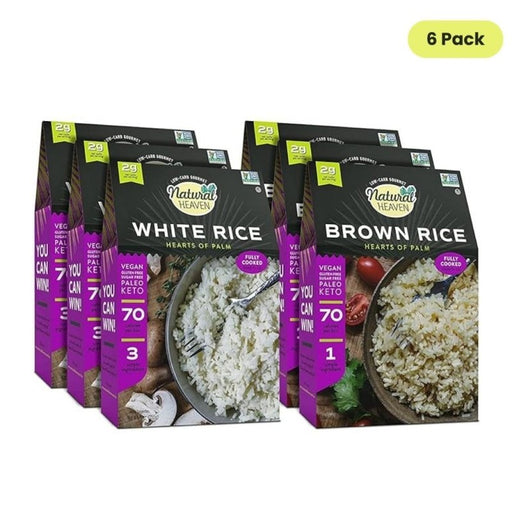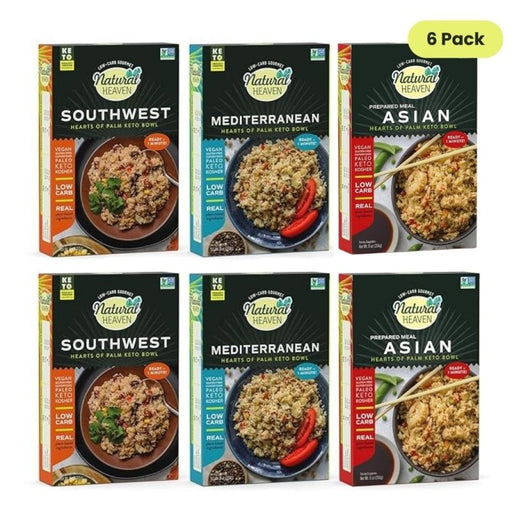Hearts of palm come from the inner core of specific palm trees, primarily the peach palm. This portion of the tree is edible and has a soft texture with a subtle crunch. Traditionally found in cans and used in salads, hearts of palm have recently gained popularity as a versatile ingredient, especially in pasta form. This plant-based option is nutritious and environmentally friendly, making it an excellent addition to any diet.
Nutritional Benefits of Hearts of Palm Pasta
Hearts of Palm pasta is a low-calorie, low-carb alternative to traditional pasta. It contains fiber, which is essential for digestive health, but does not have significant amounts of protein or fat.
This makes it an excellent option for those managing their carbohydrate intake, such as individuals with type 2 diabetes. By incorporating hearts of palm pasta into your meals, you can enjoy pasta's familiar taste and texture without the added calories and carbs.
How to Cook Hearts of Palm Pasta
Cooking hearts of palm pasta is straightforward but slightly different from preparing traditional pasta. Here’s a step-by-step guide:
-
Rinse the Noodles: Start by rinsing the hearts of palm pasta thoroughly under cold water.
-
Boil the Pasta: Bring a pot of water to a boil, add the rinsed pasta, and cook for about 5 minutes.
-
Strain and Rinse Again: After boiling, strain the pasta and rinse it under cold water.
If you prefer a milder taste, you can soak the pasta in milk for 15 minutes after the initial rinse and before boiling. This can reduce the natural flavor that some might find strong.
Taste and Texture
Hearts of Palm pasta has a unique flavor reminiscent of artichokes or olives. While the initial taste is distinctive, boiling tends to mellow it out. The texture remains crunchy compared to regular pasta, which may take some time. However, many find this crunch adds an enjoyable dimension to their meals.
Cooking Tips and Recipe Ideas
To make the most out of hearts of palm pasta, consider these tips and recipes:
-
Pair with Rich Sauces: The unique flavor and texture of hearts of palm pasta pair well with rich, creamy sauces. Think Alfredo or a hearty Bolognese.
-
Add Protein and Fat: Since hearts of palm pasta lack protein and fat, incorporating these elements into your dish is crucial for satiety. Add grilled chicken, shrimp, or tofu for protein, and a healthy fat source like olive oil or avocado.
-
Use Fresh Veggies: Enhance your pasta dish with various fresh vegetables. Sautéed bell peppers, mushrooms, and spinach can add flavor and nutrition.
Hearts of Palm Pasta and Type 2 Diabetes
For those managing type 2 diabetes, hearts of palm pasta is a beneficial alternative to traditional pasta. Its low carbohydrate content helps maintain stable blood sugar levels, reducing the risk of spikes. Incorporating this pasta into your diet can make a significant difference in managing your condition without sacrificing the enjoyment of your favorite pasta dishes.
Sustainability and Environmental Impact
Hearts of palm is a sustainable crop. The peach palm trees used for harvesting regenerate quickly, ensuring a continuous supply without causing deforestation.
Hearts of Palm pasta is a nutritious, low-carb alternative that fits well into various diets. Its unique flavor and texture make it a versatile ingredient in numerous recipes. Whether you’re managing your carbohydrate intake or simply looking to try something new, hearts of palm pasta is worth exploring.
At Natural Heaven, we pride ourselves on providing delicious and healthy alternatives to traditional foods. Explore our range of hearts of palm pasta options and discover how easy and enjoyable healthy eating can be.















